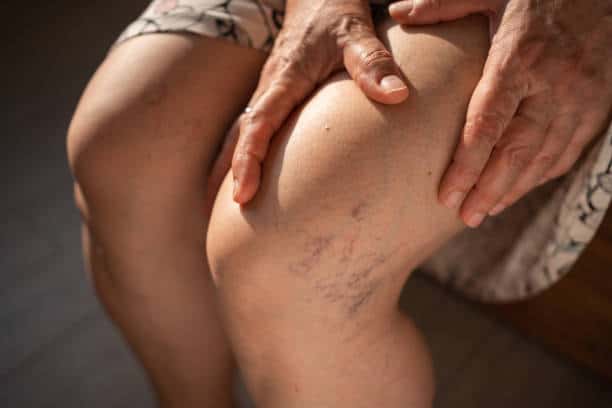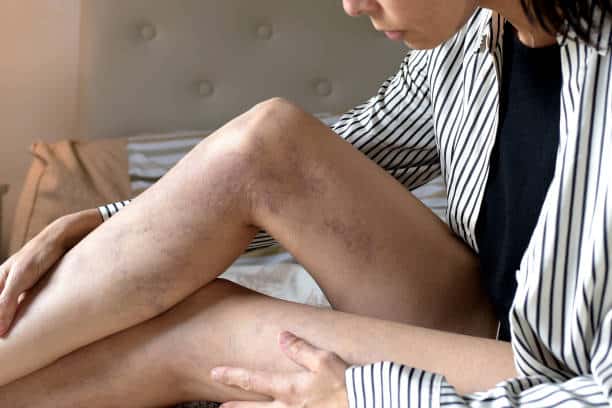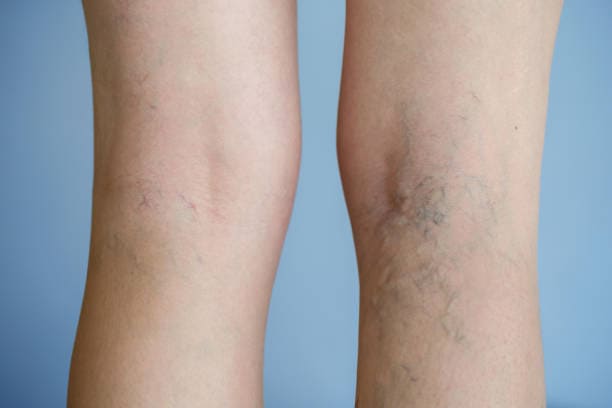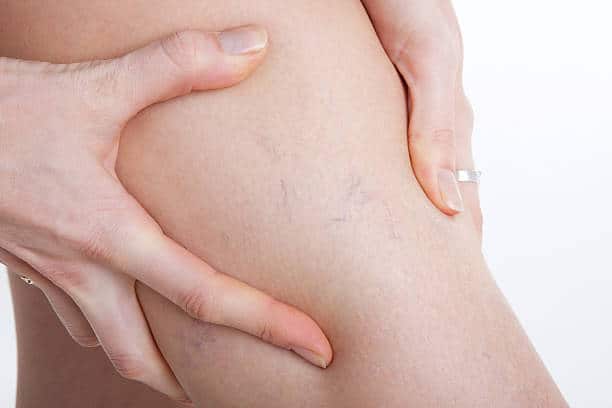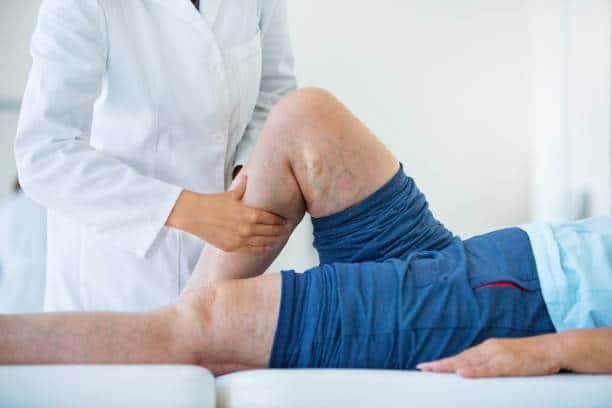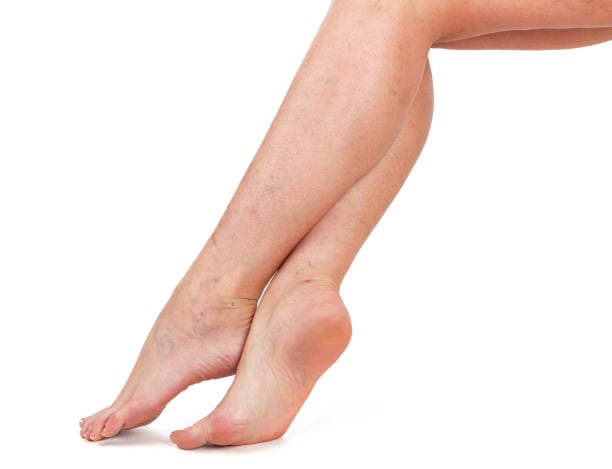You’ve probably heard of varicose veins, those swollen, twisted veins that often appear on the legs causing discomfort and self-consciousness. Varithena is a popular solution to tackle this issue, but not everyone knows what it’s all about.
Therefore, Introducing the Varithena Guide—a simple resource to help you understand this effective treatment. If you’re dealing with varicose veins or curious about treatment options, this guide is for you. It explains how Varithena works, who it’s suitable for, and what results you can expect.
We’ll walk you through the treatment process, explain how Varithena helps veins function better, and talk about the relief it can bring. Safety is a top concern, so we’ll also address common questions you might have ever thought of.
That’s why, consider sticking with us till the very end, as there are many known facts about Varithena you may not know yet! Knowing about these facts can be even life-saving sometimes, so it’s better to learn about them before you have to deal with any serious problem caused by varicose veins!
What Actually Varithena Is?
Before we get into the depths of Varithena, let’s know what it actually means. Varithena, also known as polidocanol injectable foam, is a medical solution for varicose veins. Administered by healthcare professionals, this prescription medication involves injecting foam directly into affected veins. The foam triggers vein walls to collapse and seal shut through a technique called ultrasound-guided foam sclerotherapy.
Primarily designed for larger veins that may not respond well to other methods like compression stockings or lifestyle changes, Varithena aims to alleviate varicose vein symptoms. These symptoms often include discomfort, swelling, heaviness, and achiness.
Who is a suitable candidate for Varithena treatment?
Varithena treatment offers a promising solution for individuals dealing with varicose veins, but not everyone may be an ideal candidate. A suitable candidate for Varithena treatment typically falls into certain categories based on their medical history, vein condition, and overall health status.
1. Varicose Vein Severity:
Varithena is often considered for individuals with larger, more pronounced varicose veins that may not respond well to less invasive treatments like compression stockings or lifestyle changes. It’s particularly effective for veins that are too tortuous or extensive for procedures like laser therapy or vein stripping.
2. Symptoms:
Those experiencing symptoms like pain, swelling, aching, or heaviness in the legs due to varicose veins may find relief through Varithena treatment.
3. Health Evaluation:
A comprehensive health evaluation is necessary to determine if an individual is fit for Varithena treatment. Underlying medical conditions, such as cardiovascular issues, could impact candidacy.
4. Age and General Health:
While there’s no strict age limit, a candidate’s overall health and ability to undergo the procedure safely are crucial factors. Your healthcare provider will assess these factors to ensure that Varithena treatment is appropriate.
5. Pregnancy and Breastfeeding:
Varithena treatment is generally not recommended for pregnant or breastfeeding women due to potential risks. It can hard the baby, so it’s better to take precautions first.
6. Previous Treatments:
Individuals who have undergone previous vein treatments without success might be considered for Varithena therapy.
7. Expectations:
A candidate should have realistic expectations about the outcomes of the procedure. While Varithena can significantly improve the appearance and symptoms of varicose veins, complete removal of all veins may not always be achievable.
8. Medical History:
Individuals with a history of blood clotting disorders or certain allergies may require careful evaluation before proceeding with Varithena treatment.
9. Open Communication:
Being able to communicate openly with the healthcare provider is crucial. Disclose any current medications, allergies, or medical conditions to ensure the treatment’s safety and effectiveness.
What symptoms of varicose veins can Varithena help improve?
Varithena treatment can help improve various symptoms caused by varicose veins, including:
1. Pain in affected area:
Varicose veins can cause discomfort and pain, especially when standing or sitting for long periods. Varithena treatment may alleviate this pain.
2. Swelling from veins:
Swelling, also known as edema, can occur due to poor circulation in varicose veins. Varithena treatment might help reduce swelling in the affected areas.
3. Aching:
Many people with varicose veins experience aching sensations in their legs. Varithena treatment could provide relief from these aches.
4. Heaviness:
Varicose veins can lead to a feeling of heaviness in the legs, making daily activities uncomfortable. Varithena treatment may help reduce this sensation.
5. Cramping:
Some individuals with varicose veins report experiencing cramps, especially during the night. Varithena treatment might alleviate these cramps.
6. Restlessness:
Restless legs, characterized by an urge to move the legs due to discomfort, can be associated with varicose veins. Varithena treatment could potentially address this restlessness.
7. Skin Changes:
Varicose veins can cause changes in the skin, including discoloration, itching, and dryness. Varithena treatment might help improve these skin-related symptoms.
8. Ulcers:
In more severe cases, varicose veins can lead to skin ulcers or open sores. Varithena treatment could aid in the healing of these ulcers.
9. Improved Appearance:
Beyond symptom relief, Varithena treatment may also enhance the cosmetic appearance of varicose veins, which can have a positive impact on self-esteem!
Are there any potential side effects of Varithena?
Of course, like any medical procedure, Varithena treatment comes with potential side effects. While many individuals tolerate the treatment well, it’s important to be aware of possible reactions. Common side effects include:
1. Temporary Discomfort:
After the treatment, you might experience mild discomfort, pain, or aching in the treated area. This discomfort usually subsides over time.
2. Bruising:
Some bruising might occur at the injection site. This is typically temporary and should fade within a few days to weeks.
3. Swelling:
Swelling at the treatment site is normal and usually resolves on its own.
4. Skin Discoloration:
Temporary skin discoloration or pigmentation changes might occur, but this is usually temporary.
5. Allergic Reactions:
Although rare, allergic reactions to the medication used in Varithena treatment are possible. Make sure to inform your healthcare provider of any allergies.
6. Blood Clots:
While uncommon, there’s a minimal risk of blood clots forming in the treated veins. Your healthcare provider will monitor for this.
7. Neuropathy:
In some cases, nerve irritation might occur, leading to temporary numbness or tingling sensations.
8. Phlebitis:
Inflammation of the treated vein, known as phlebitis, can lead to redness, warmth, and tenderness in the area.
9. Blood Trapped:
Blood might get trapped in treated veins, causing a lump that usually resolves on its own.
Is Varithena an outpatient procedure?
Certainly, Varithena treatment is typically performed as an outpatient procedure. This means that you can have the treatment done at a medical facility without the need for an overnight stay in a hospital. The procedure usually takes a relatively short amount of time, and after a brief period of observation, you can return home the same day.
It’s important to arrange for someone to drive you home after the procedure, as you might experience some temporary discomfort or mild effects from the treatment. Your healthcare provider will provide specific post-procedure instructions for a smooth recovery!
Are multiple Varithena sessions usually required for optimal results?
Yes, multiple Varithena sessions are often required to achieve optimal results. The number of sessions can vary depending on the severity of your varicose veins and how well you respond to the treatment. Generally, patients may need one to three sessions, spaced several weeks apart.
Are the results of Varithena treatment permanent?
Although, the results of Varithena treatment can be long-lasting, they might not be considered entirely permanent. Varithena aims to improve symptoms and appearance by closing off problematic veins. Over time, the treated veins may be absorbed by the body, and blood flow is redirected to healthier veins!
This can provide lasting relief from symptoms and cosmetic improvement. However, new veins might develop or existing veins can become problematic in the future. Factors such as genetics, lifestyle, and overall vein health can influence the longevity of results. Regular follow-up with a healthcare provider and adopting healthy habits can help maintain the benefits of Varithena treatment.
What precautions should I take before and after Varithena treatment?
Before Varithena Treatment:
1. Consultation: Schedule a consultation with a qualified healthcare provider specializing in vein conditions to determine if Varithena is suitable for you.
2. Medical History: Provide a detailed medical history, including allergies, medications, and previous treatments, to your healthcare provider.
3. Questions: Prepare questions about the procedure, recovery, and potential outcomes to address any concerns during the consultation.
4. Medications: Follow your healthcare provider’s instructions regarding medication usage before the procedure, especially blood-thinning medications.
5. Hydration: Stay well-hydrated in the days leading up to the treatment.
6. Avoid Smoking: If you smoke, consider reducing or quitting before the procedure to aid in healing!
After Varithena Treatment:
1. Compression Garments: Follow your healthcare provider’s recommendations for wearing compression stockings after the procedure to promote healing and reduce swelling.
2. Activity Restrictions: Your healthcare provider may advise avoiding strenuous activities and heavy lifting for a certain period after the treatment.
3. Walking: Light walking is encouraged after treatment to aid in blood circulation and prevent blood clots.
4. Hydration: Continue to stay hydrated to support healing.
5. Avoid Heat: Avoid hot baths, saunas, and direct sunlight on the treated areas for a certain time as advised.
What advances or improvements have been made in Varithena treatment over time?
Advances and improvements in Varithena treatment have enhanced its effectiveness and patient experience over time:
1. Formulation Refinement:
The foam used in Varithena has undergone refinements, optimizing its ability to effectively treat varicose veins while minimizing discomfort.
2. Precision:
Technological advancements have improved the precision of foam injection, ensuring targeted treatment of problematic veins.
3. Customization:
Healthcare providers can tailor Varithena treatment plans based on individual vein conditions, leading to more personalized and effective outcomes.
4. Reduced Discomfort:
Improved techniques and refined foam formulation have contributed to reduced discomfort during and after the procedure!
5. Minimized Side Effects:
Enhancements in foam composition have reduced the risk of side effects, making Varithena a safer option.
6. Consistency:
Advances have led to foam consistency that facilitates better dispersion within veins, optimizing treatment efficacyn!
7. Shorter Recovery:
Refinements in Varithena treatment have led to shorter recovery times, allowing individuals to resume daily activities sooner.
Can Varithena be used for varicose veins in areas other than the legs?
Varithena treatment is primarily intended for varicose veins in the legs, which is the most common area affected. Its effectiveness and safety have been extensively studied for leg veins. While off-label use for non-leg areas might be considered in certain cases, it’s important to consult a qualified healthcare provider. They can assess the suitability and potential risks of using Varithena for varicose veins in other areas, provide informed recommendations, and guide you toward the best treatment options for your individual needs.
Are there any restrictions on physical activity following Varithena treatment?
Following Varithena treatment, healthcare providers often recommend certain restrictions on physical activity to promote healing and reduce the risk of complications. While these restrictions can vary based on individual cases and provider recommendations, here are some general guidelines:
1. Light Walking:
Light walking is encouraged after the procedure to promote blood circulation and help prevent blood clots. Walking can aid in the healing process without putting excessive strain on the treated veins.
2. Avoid Strenuous Activity:
Strenuous activities, such as heavy lifting, vigorous exercise, and activities that involve straining, should be avoided for a specified period after the treatment. This prevents increased pressure on the treated veins and allows them to heal properly.
3. Compression Stockings:
Your healthcare provider might recommend wearing compression stockings for a certain duration after the procedure. These stockings help support blood flow and minimize swelling.
4. Gradual Resumption:
When resuming physical activities, it’s important to do so gradually. Start with light activities and gradually increase intensity as advised by your healthcare provider!
5. Stay Hydrated:
Proper hydration supports healing and circulation. Drink enough water throughout the recovery period.
Can Varithena Eliminate Varicose Veins Permanently?
The results of Varithena are extremely effective and long lasting, but there’s no treatment in the world that can eliminate varicose veins permanently, and Varithena is no exception, here’s why:
1. Treated Veins: Varithena treatment effectively closes off the troubled veins, and fortunately they never reopen. Once they are sealed, they will not cause any sort of trouble.
2. Underlying Causes: Always remember, varicose veins can treat only the existing varicose veins, and since no one knows which vein might turn into a varicose veins in future, it’s impossible to eliminate the problem permanently. So if you had varicose veins it could be because of conditions like venous insufficiency, pregnancy, or being overweight which make you more prone to varicose veins. If these conditions are treated then you will be free from varicose veins.
3. Lifestyle Factors: Prolonged sitting or standing play a big role in formation for varicose veins, as long as you continue such lifestyle, varicose veins will keep developing.
4. Aging: As you get older, your vein walls will get weaker which makes it much easier for them to get damaged and develop varicose veins.
All this easily explains why despite being aj effective treatment, varithena cannot permanently treat this problem. Whether you want them or not depends on your lifestyle most of the time.
How Many Varithena Treatments Are Usually Needed For Optimal Results?
The number of Varithena sessions needed for optimal results deoend on the severity of your varicose veins. However, in most cases one or two sessions are enough for desired results, but if your condition is more severe then you might need multiple.
But there are some factors that can increase the number of sessions, such as if you have multiple veins that need to be treated then you will require multiple sessions fir sure! Same goes if your both legs are being treated!
Conclusion
Varithena is an effective treatment any varicose vein patient would want as it’s probably the most useful and effective treatment available. However, always be careful about side effects, and make sure to follow up with your doctor’s advice, you will get well soon in no time. Also, we hope by now, you have gained a lot of knowledge regarding to Varithena, which can help you out later!

